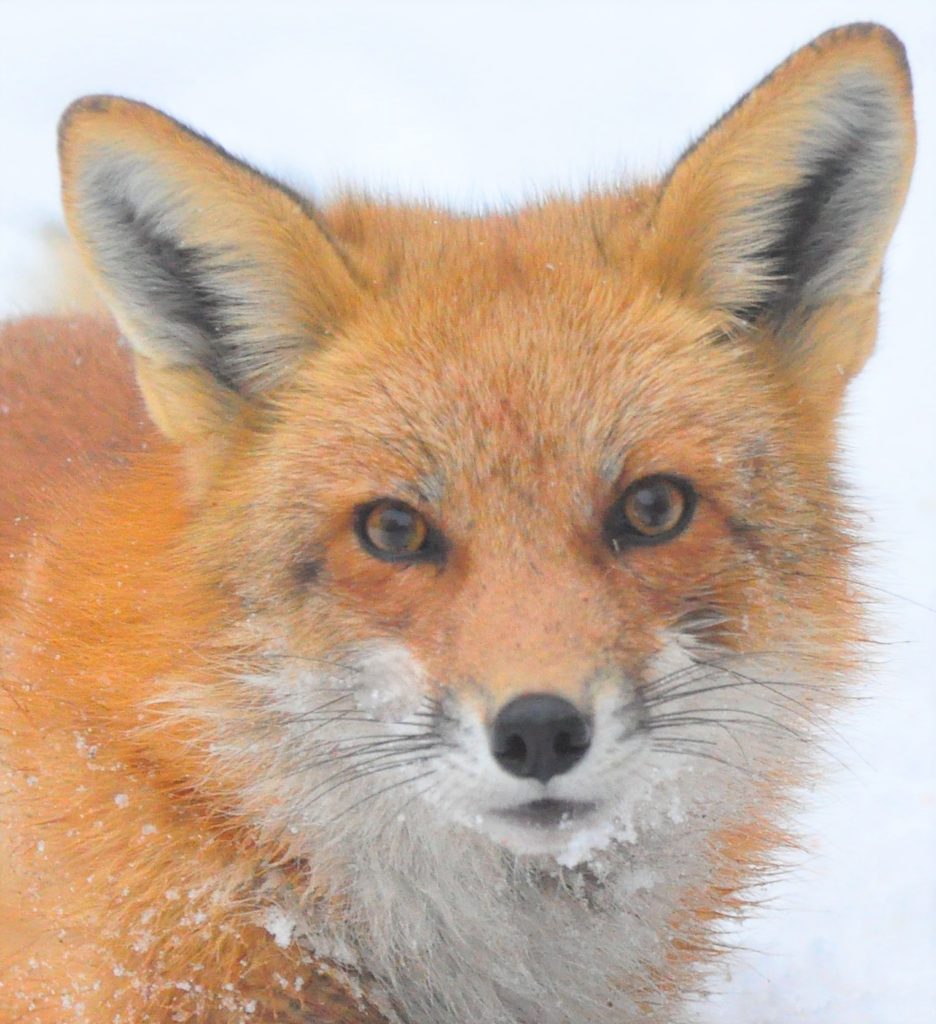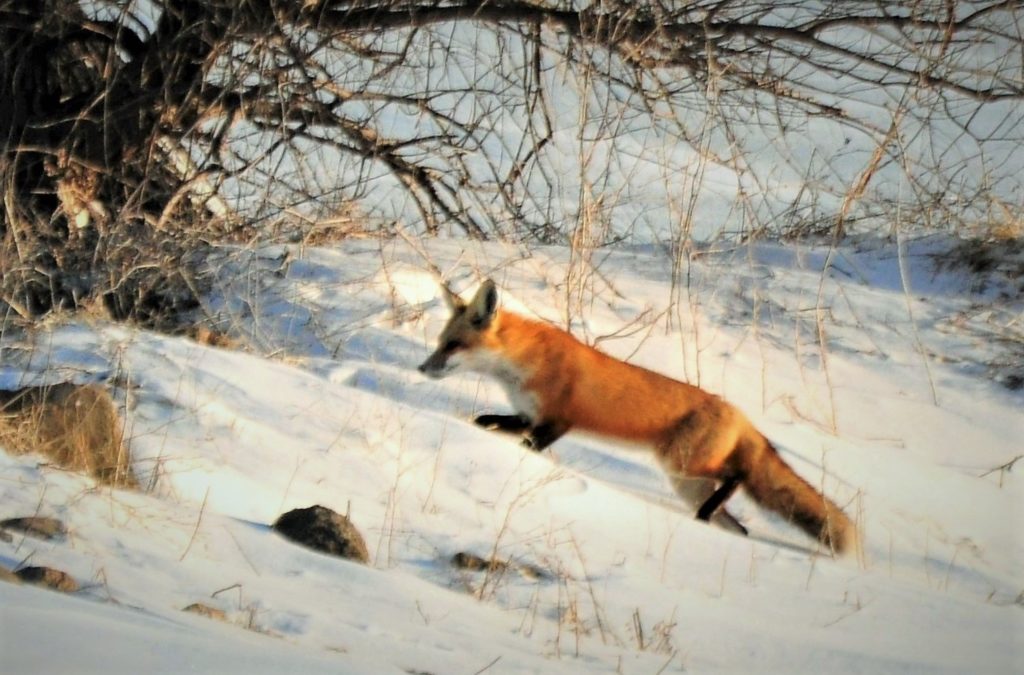Photography courtesy of Lowell Washburn, all rights reserved.
Pursuing the red fox is a challenging pastime. My latest attempt at catching one was a classic example. Following a week of cat and mouse, the sighting of fresh tracks, but no fox, was all I had to show. I finally caught the big male on January 31 — the very last day of this year’s season. Since I’m not exactly what you’d call a Blue-Ribbon fox trapper, the event was an especially rewarding end to the season. It also triggered a flood of memories from days gone by.

My first encounter with the red fox occurred when I was 14. My Dad and I were hunting pheasants on my Grandpa’s farm – now Mallard Marsh — when a big vixen erupted from the grass. Hastily touching off a charge of #6 birdshot, my first ever fox was in the bag. After collecting a two-dollar bounty at the Mason City County Courthouse, the fox’s home tanned hide was soon hanging on my bedroom wall. As near as I can remember, that was my one and only easy fox. The remainder of my meager catches have involved work, frustration and frequent failure.
Although I’ve never become an expert at hunting or trapping the wild fox, I have had enough experience with the species to realize that Ol’ Red possess a better than average level of animal intelligence. As vividly portrayed in Aesop’s Fables, the fox is indeed sly and crafty. For anyone seeking a quick lesson in outdoor humility, I highly recommend matching wits with the red fox.
Whether or not its storybook reputation is fully deserved, the red fox remains one of Iowa’s most controversial forms of wildlife. Fox are loved, hated, respected, and despised. There are occasions when all four of these emotions can be displayed, simultaneously, by a single person.
How someone feels about fox is largely a matter of perspective. To the pheasant or duck hunter, the red fox is often regarded as a wanton destroyer of nests, eggs, and chicks. Rabbit and squirrel hunters may view the fox as a direct competitor for small game. Rural poultry hobbyists are quick to loath the fox’s nighttime raids on “predator proof” enclosures.
Others take a more positive view and think of the fox as a challenging and valuable natural resource that, whether trapped or hunted, has the potential to provide exciting, high quality outdoor recreation. They also note that although fox will take rabbits, squirrels, or pheasants; the bulk of their year-round diet is more likely to consist of rodents such as mice and voles. Anyone who has visited a den site containing frolicking pups is already aware of the fox’s value as a highly entertaining and watchable form of Iowa wildlife.

So, what is the fox’s true identity? Is it friend or foe? Villain or valuable natural resource? Amazingly, the answers are yes and yes.
First and foremost, the red fox is a predator. During spring and early summer, fox are effective nest predators. Of course, raccoons, skunks, and ‘possums also find and destroy the nests of ground nesting birds like larks, pheasants, and mallards. The notable difference is that those predators rarely catch the brooding hens. But with the fox’s keen nose and soft footed approach, the opposite is often true as both the hen and her eggs are destroyed – an irreversible double whammy that precludes any future attempts at renesting.
On a more positive note, red fox have historically represented a valuable recreational and commercial natural resource. During the mid-1960s, Iowa hunters and trappers annually harvested around 28,000 red fox pelts. Harvest rates remained high through the 1970’s, with around 24,000 pelts being sold each year. Values soared with pelts averaging $65 each [an equivalent of more than $230 today] during the1978-1979 hunting and trapping seasons. The best fox brought even more. In 1979, I received $90 for one exceptional specimen, the highest price I ever received for a single pelt.
Since those Glory Days of Iowa fur trapping, red fox populations, fox harvest, and overall pelt values have all shown a more or less steady decline. Population declines are attributed to habitat loss, coyote predation, and mange. Hunter/trapper declines are attributed to the combination of less fox and declining fur prices. During the 2015-2016 Iowa season, only 1,581 red fox pelts were reported. The average price per pelt was $10. During the 2020-2021 season, fox pelts dropped even further to a dismal two to five dollars.
I’ve decided not sell my end-of-the-season fox. Instead, I’m going to fashion the predator’s tanned pelt into a functional bow quiver. Beyond its value as a backwoods fashion statement, the finished quiver will also provide a continuing reminder of days gone by.

 Tom Cope
Tom Cope Sue Wilkinson
Sue Wilkinson Susan Judkins Josten
Susan Judkins Josten Rudi Roeslein
Rudi Roeslein Elyssa McFarland
Elyssa McFarland Mark Langgin
Mark Langgin Adam Janke
Adam Janke Joe Henry
Joe Henry Kristin Ashenbrenner
Kristin Ashenbrenner Joe Wilkinson
Joe Wilkinson Dr. Tammy Mildenstein
Dr. Tammy Mildenstein Sean McMahon
Sean McMahon